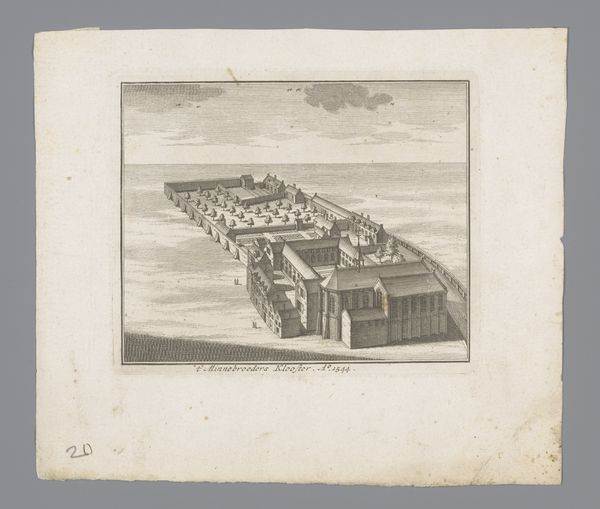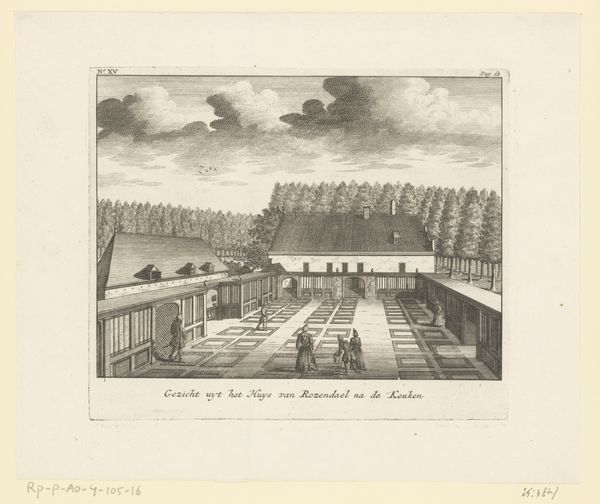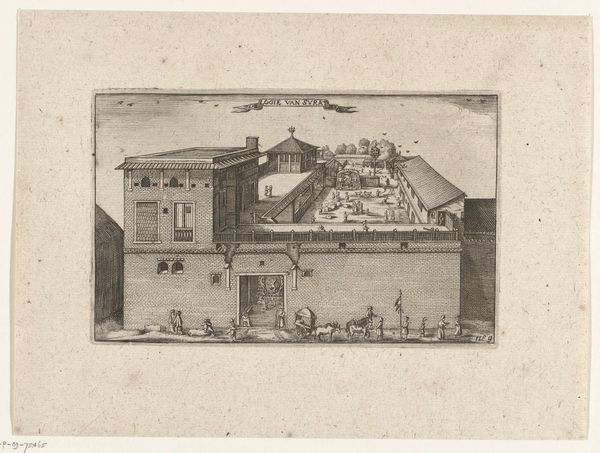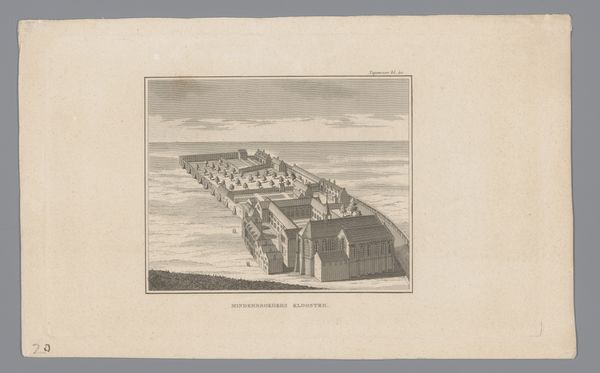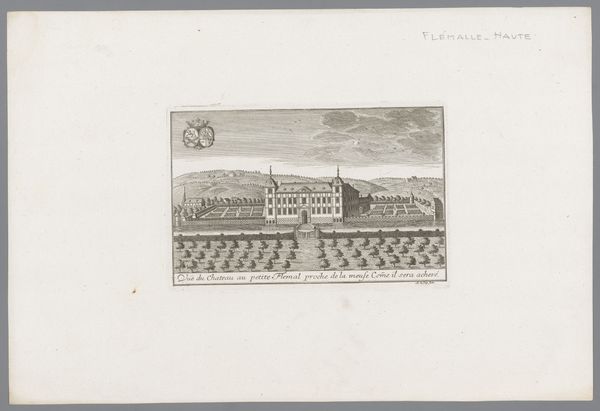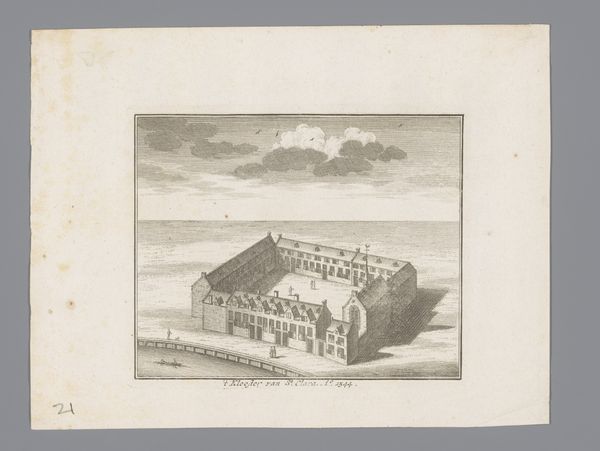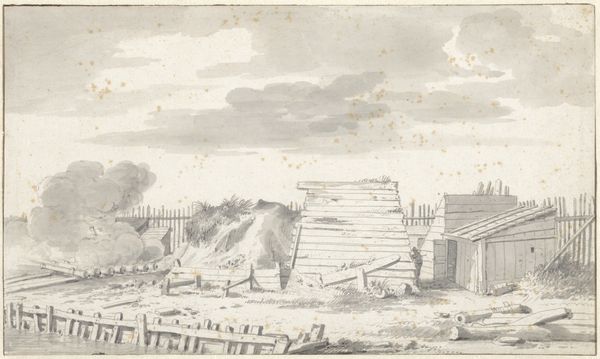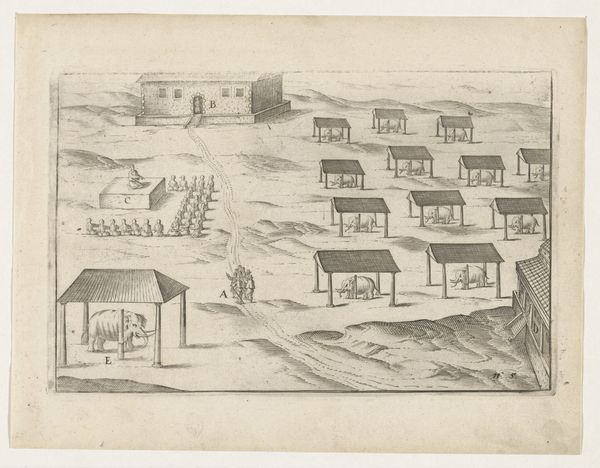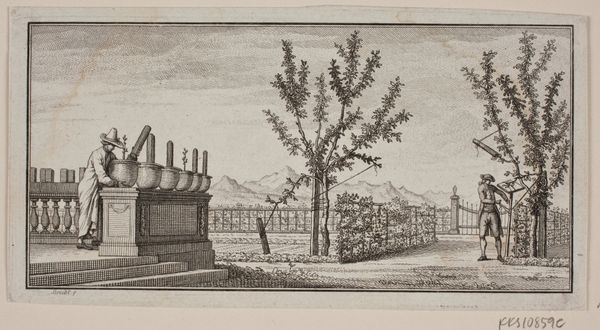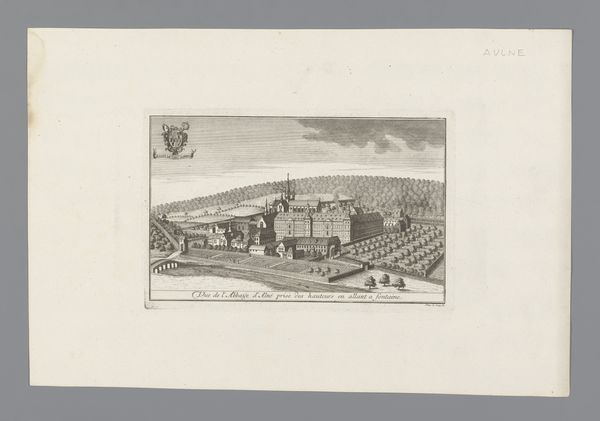
print, engraving
#
dutch-golden-age
# print
#
old engraving style
#
islamic-art
#
genre-painting
#
history-painting
#
engraving
Dimensions: height 145 mm, width 215 mm
Copyright: Rijks Museum: Open Domain
Editor: Here we have "De dierenverblijven van de koning van Tuban," or "The Animal Enclosures of the King of Tuban," an engraving dating from the early 1600s. The identity of the artist is, sadly, lost to time. I'm immediately struck by how the structures almost seem like elaborate display cases rather than actual enclosures for animals. What catches your eye about this print? Curator: I see an image deeply embedded in its own production. Look at the deliberate etching, a mechanical process translating observations – perhaps fantastical ones – of a distant land for European consumption. Consider the material cost, both in terms of the metal plate and the labour required to produce the print. It suggests a value placed on exoticism and knowledge acquisition. What does the king's control of these animals suggest about the Dutch perception of power and trade? Editor: That’s fascinating! So you’re saying the print itself becomes a commodity, showcasing the exotic animals and, by extension, the king's wealth and power, and thus Dutch access to those resources through trade. Is it about the control over natural resources in some way? Curator: Precisely! The cages themselves – note their almost uniform design – reflect a desire to categorize and contain. It prompts questions about the colonial gaze: Who is looking at whom, and what are the economic underpinnings of this gaze? Think about the labor required to build and maintain these "enclosures". It hints at complex systems of resource extraction. Are these depictions accurate, or are they staged for maximum exotic impact? Editor: That's a powerful way to look at it, considering the conditions under which engravings like these were made, how it frames that moment in time and its participants! I never considered the material production as being so vital to its meaning. Curator: Reflecting on the work now, I understand how we must question every source for how materials can reflect socio-economic conditions, because this lens illuminates history. Editor: Exactly! Looking at art through the lens of materials and labour makes these historic processes more tangible, something to explore going forward.
Comments
No comments
Be the first to comment and join the conversation on the ultimate creative platform.
